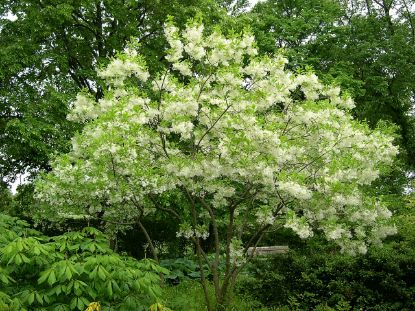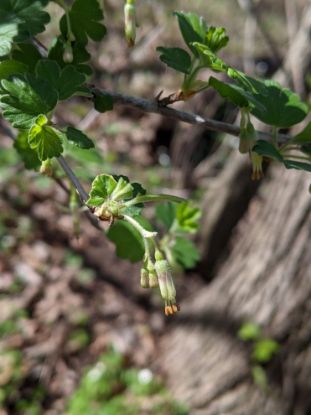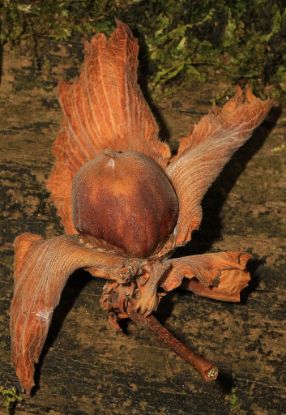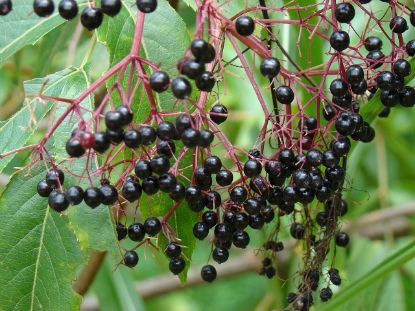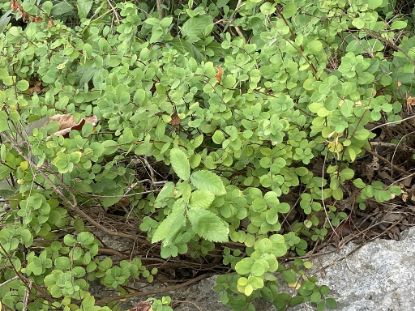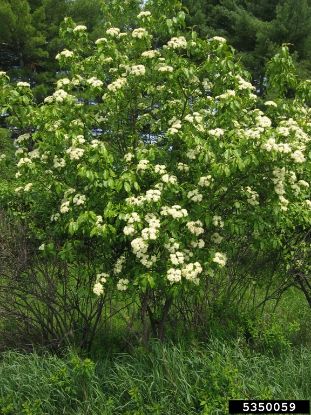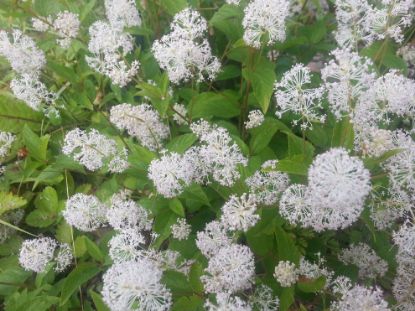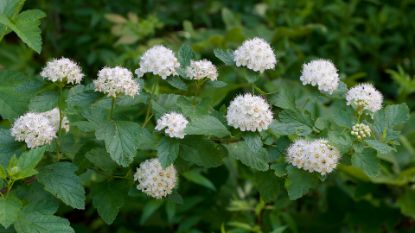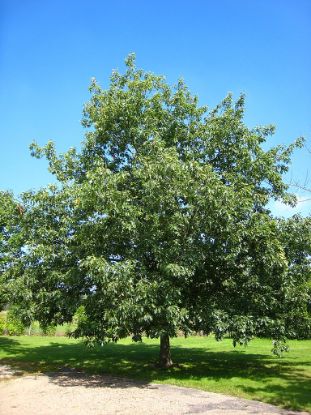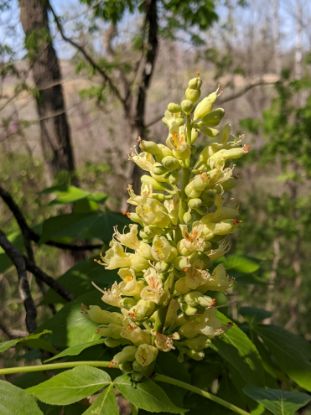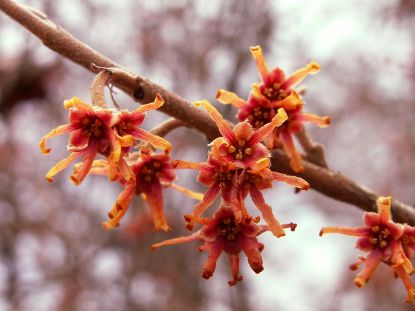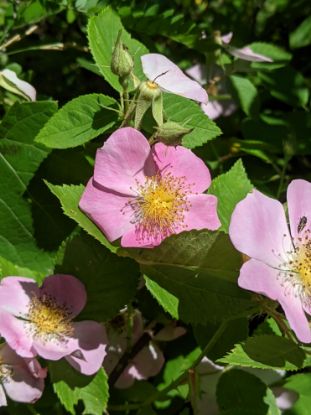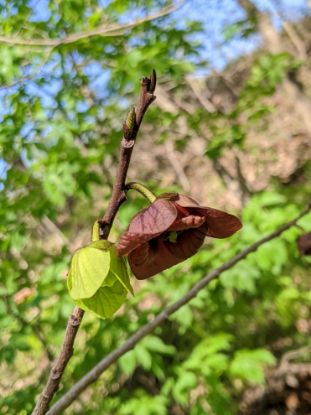Filter by attributes
Shrubs and Trees
Sort by
Display
per page
View as
49 products found
Fringetree (Chionanthus virginicus)
Yellow leaves and bluish-black fruit in the fall. Male and female parts may be on separate trees or a single tree; fruit only appears on trees with female parts. Canopy about 15 feet wide.
Out of stock
From $14.00
Gooseberry (Ribes missouriense)
A woodland fruiting shrub with sour berries; many people make jam, Tracy likes to eat them sour off the bush. Interesting shaped leaves and short-lived, dangling flowers, but watch out for the thorns. Fruits better in more sun, but benefits from late afte
I'm sleeping right now. See you in the spring.
$6.00
Hazelnut (Corylus americana)
Produces a delicious nut in late summer that is enjoyed by wildlife and humans alike. Thicket-forming shrub that will grow in several sun/moisture conditions.
Out of stock
$14.00
Hercules' Club (Aralia spinosa)
Large, compound leaves, and large flowers make for an unique specimen. Due to size, thorns, and tendency to spread into a hedge, this plant is best suited for a large garden or fence row. The berries attract birds in the fall.
Out of stock
$6.00
Lead Plant (Amorpha canescens)
Beautiful silvery leaves and purple flowers with orange stamens makes this plant stand out. Grows slow and may take awhile to establish. May be a favorite for deer and rabbits.
I'm sleeping right now. See you in the spring.
From $6.00
Missouri Maidenbush (Phyllanthopsis phyllanthoides)
Native to the southern Ozark region, this small, unique shrub adds nice texture to a formal garden.
I'm sleeping right now. See you in the spring.
$6.00
Nannyberry (Viburnum lentago)
Fall dark-blue fruits are enjoyed by wildlife and people. May perform a thicket unless suckers removed and plant pruned to desired shape. Prune right after flowering. Host for Spring Azure.
I'm sleeping right now. See you in the spring.
From $14.00
Narrow-leaved New Jersey Tea (Ceanothus herbaceus)
A beautiful compact shrub for a dry area. Attracts many pollinators and is browsed by the deer and rabbits. Flowers on new growth so trim after blooming, if desired.
Out of stock
From $6.00
New Jersey Tea (Ceanothus americanus)
A compact shrub. Deep roots make this plant drought tolerant. Dried leaves have been used as a tea substitute.
I'm sleeping right now. See you in the spring.
From $6.00
Ninebark (Physocarpus opulifolius)
Spreads into a thicket - may be used as a hedge screen. Peeling bark adds winter interest. Flowers attract butterflies and moths. Fruits attract birds in the fall.
I'm sleeping right now. See you in the spring.
From $6.00
Northern Red Oak (Quercus rubra)
Oaks are wonderful shade trees. This oak has a nice, rounded shape, growing about as tall as wide. Oaks attract lots of wildlife, from insects that feed on the tree, to birds that feed on the insects, and mammals that feed on the acorns.
I'm sleeping right now. See you in the spring.
From $14.00
Ohio Buckeye (Aesculus glabra)
An understory tree that typically only reaches about 20 feet. One of the first trees to leaf out in the spring; Tracy likes to call them "Truffala trees" because of the shape the leaves make as they are emerging from the bud in early spring.
Out of stock
From $14.00
Ozark Witch Hazel (Hamamelis vernalis)
Provides food and cover for wildlife. Winter blooms are an exciting find in the forest.
I'm sleeping right now. See you in the spring.
From $14.00
Pasture Rose (Rosa carolina)
A prickly, short, shrubby, native rose. Can tolerate shade, but grows best in full sun for disease resistance and full blooms. Rose hips eaten by birds and mammals and used to make teas.
Out of stock
$6.00
Pawpaw (Asimina triloba)
Enjoy the delicious fruit of our one and only tropical native tree. Notorious for being difficult to transplant. Does better if planted in shade or part shade for at least the first several years. Better fruit production when multiple trees planted near e
I'm sleeping right now. See you in the spring.
From $12.00
